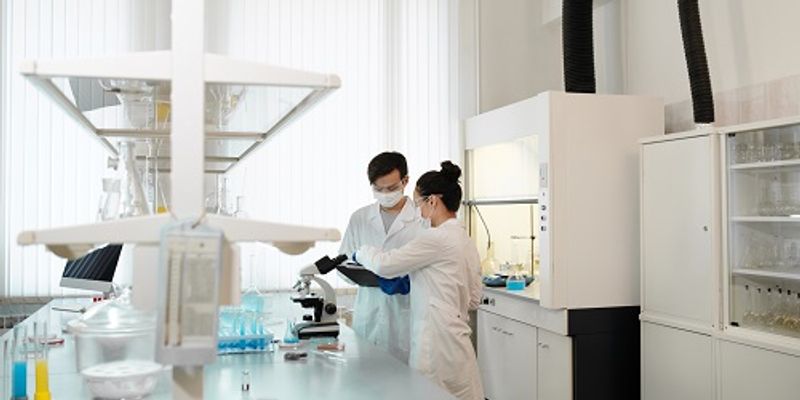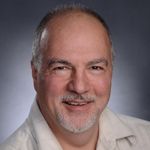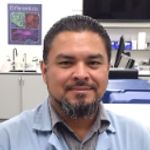Gene and Cell Therapy
With the goal of treating and curing disease, gene and cell therapy provide treatment by means of altering a person's genetic code and transferring live cells to improve symptoms and reduce levels of disease-causing proteins.
-
FEB 23, 2017 | 7:30 AMPsychiatric disorders are among the leading causes of disability worldwide. One fifth of the population will suffer from a psychiatric disorder in their lifetime. Antipsychotic and antidepres...FEB 23, 2017 | 6:00 AMBest practices for developing precision medicine diagnostics can include completing a retrospective analysis. Obtaining enough samples to have a statistically significant study typicall...FEB 23, 2017 | 6:00 AMLiquid Biopsies are gaining acceptance in the Oncology community as a surrogate or complement to the gold standard of tissue biopsy. A liquid biopsy provides biomarker information that...FEB 22, 2017 | 1:30 PMBiobanks are a powerful resource in the advancement of precision medicine, and integrating large scale genomics data across Biobank cohorts offer opportunities to further enhance and expedite...FEB 22, 2017 | 12:00 PMIn this talk, I will use examples from my research using big data analytics to define ideals of precision medicine and digital health across a variety of diseases. Specifically, I will i...FEB 22, 2017 | 12:00 PMChallenges in achieving comparability, reproducibility and accuracy in biological assays has driven a demand for improved confidence in measurements that support development of regenerative m...FEB 22, 2017 | 10:30 AMIdentification of the many complex genetic aberrations associated with cancers, and deciphering their role in disease progression and response to treatment is one of the major challenges face...Speaker: Salim Essakali , Yi Kong, Ph.D.Presented at: Precision Medicine Virtual Event Series 2017
FEB 22, 2017 | 10:30 AMMuch has been made in the popular press about importance of our "genes" in everything from our weight, intelligence, and our risk of disease. While there is a scientific basis...FEB 22, 2017 | 9:00 AMGastrointestinal (GI) disorders are now widely recognized as a clinical symptom of autism spectrum disorder (ASD), and research into the microbiome-gut-brain axis is beginning to reveal the i...FEB 22, 2017 | 7:30 AMLaunched in early 2015, the Precision Medicine Initiative (PMI) takes advantage of the progress made in genomic testing – progress largely driven by rapid advances in DNA sequencing tec...FEB 22, 2017 | 6:00 AMRecent advances in DNA sequencing have now made it possible to characterize genomes, transcriptomes and even methylomes which is transforming both basic research and clinical practice. Whole...FEB 22, 2017 | 6:00 AMThe starting point for an interaction between a patient and a clinician is almost always a set of clinical facts (aka a phenotype). Phenotype-first medicine is the standard way in which the p...FEB 21, 2017 | 11:00 AMThe use of pluripotent stem cell-derived cell types for disease modeling, drug screening and regenerative medicine is an exciting area of activity in health research. Prior to the availabilit...FEB 08, 2017 | 3:00 PMDATE: February 8, 2017TIME: 3:00pm PT, 6:00pm ETMeloxicam is an analgesic NSAID commonly used in mice. Anecdotal evidence supports the use of alternative delivery methods for analgesics...Speaker: Angela Mexas, DVM, PhD, DACVIM, DACLAM , CJ Doane, DVM, DACLAMPresented at: Laboratory Animal Sciences Virtual Event Series 2017
FEB 08, 2017 | 1:30 PMDATE: February 8, 2017TIME: 1:30pm PT, 4:30pm ETIn rabbits, buprenorphine instant release (IR) is commonly used to alleviate pain, especially in surgical models. However, maintenan...Speaker: Andrea Zanetti, DVM, PhD, SRSPresented at: Laboratory Animal Sciences Virtual Event Series 2017
FEB 08, 2017 | 10:30 AMDATE: February 8, 2017TIME: 10:30am PT, 1:30pm ETThe cat remains an important comparative species for studying the long-term safety and efficacy of emergent medical modalities, such as...NOV 17, 2016 | 3:00 PMStem cells play critical roles in the development of organisms, as well as in the maintenance and repair of organs and tissues throughout adulthood. Advancing our understanding of mecha...NOV 17, 2016 | 9:00 AMThis panel will discuss quality requirements of ancillary materials used in cell therapy manufacturing, relevant standards and how requirements vary by phase. Participants will learn wh...Speaker: Joyce Frey-Vasconcells, PhD , Michael Mendicino, PhD , Kelli Tanzella, PhDPresented at: 4th Annual 24 Hours of Stem Cells™ virtual event
NOV 17, 2016 | 7:00 AMDATE: November 17, 2016 TIME: 7:00am PT, 10:00am ET Induced pluripotent stem (iPS) cell reprogramming allows turning an adult somatic cell into a pluripotent stem cell. Four Fac...NOV 17, 2016 | 5:00 AMThe Alliance for Regenerative Medicine (ARM) is the preeminent global advocate for regenerative and advanced therapies. ARM fosters research, development, investment and commercialization of ...Speaker: Michael Werner , Morrie Ruffin, PhDPresented at: 4th Annual 24 Hours of Stem Cells™ virtual event
OCT 06, 2016 | 10:30 AMTumors often evade immune destruction by adapting and circumventing immune checkpoints to create resistance. This adaptive immunity can be reversed to stimulate the endogenous immune re...Speaker: Erin Newburn, MS, PhDSEP 29, 2016 | 8:00 AMPRESENTED BY:DATE: September 29, 2016TIME: 8:00AM PT, 11AM ETInterest in 3D cell culture has grown exponentially in recent years, partially due to 3D cultures hel...AUG 30, 2016 | 8:00 AMThe reprogramming of somatic cells into induced Pluripotent Stem Cells (iPSC) has great potential of applications, not only in basic research, but also in drug screening and cell therapy. Wit...Speaker: Rene Quintanilla Jr.Presented at: 4th Annual 24 Hours of Stem Cells™ virtual event
Sponsored By: Thermo Fisher Scientific, Thermo Fisher ScientificAUG 30, 2016 | 8:00 AMA major challenge for the clinical application of pluripotent stem cell therapy for neurodegenerative diseases is large-scale manufacturing and cryopreservation of neurons and glia that can b...
FEB 23, 2017 | 7:30 AM
Psychiatric disorders are among the leading causes of disability worldwide. One fifth of the population will suffer from a psychiatric disorder in their lifetime. Antipsychotic and antidepres...
FEB 23, 2017 | 6:00 AM
Best practices for developing precision medicine diagnostics can include completing a retrospective analysis. Obtaining enough samples to have a statistically significant study typicall...
FEB 23, 2017 | 6:00 AM
Liquid Biopsies are gaining acceptance in the Oncology community as a surrogate or complement to the gold standard of tissue biopsy. A liquid biopsy provides biomarker information that...
FEB 22, 2017 | 1:30 PM
Biobanks are a powerful resource in the advancement of precision medicine, and integrating large scale genomics data across Biobank cohorts offer opportunities to further enhance and expedite...
FEB 22, 2017 | 12:00 PM
In this talk, I will use examples from my research using big data analytics to define ideals of precision medicine and digital health across a variety of diseases. Specifically, I will i...
FEB 22, 2017 | 12:00 PM
Challenges in achieving comparability, reproducibility and accuracy in biological assays has driven a demand for improved confidence in measurements that support development of regenerative m...
FEB 22, 2017 | 10:30 AM
Identification of the many complex genetic aberrations associated with cancers, and deciphering their role in disease progression and response to treatment is one of the major challenges face...
Speaker:
Salim Essakali
, Yi Kong, Ph.D.
Presented at: Precision Medicine Virtual Event Series 2017
FEB 22, 2017 | 10:30 AM
Much has been made in the popular press about importance of our "genes" in everything from our weight, intelligence, and our risk of disease. While there is a scientific basis...
FEB 22, 2017 | 9:00 AM
Gastrointestinal (GI) disorders are now widely recognized as a clinical symptom of autism spectrum disorder (ASD), and research into the microbiome-gut-brain axis is beginning to reveal the i...
FEB 22, 2017 | 7:30 AM
Launched in early 2015, the Precision Medicine Initiative (PMI) takes advantage of the progress made in genomic testing – progress largely driven by rapid advances in DNA sequencing tec...
FEB 22, 2017 | 6:00 AM
Recent advances in DNA sequencing have now made it possible to characterize genomes, transcriptomes and even methylomes which is transforming both basic research and clinical practice. Whole...
FEB 22, 2017 | 6:00 AM
The starting point for an interaction between a patient and a clinician is almost always a set of clinical facts (aka a phenotype). Phenotype-first medicine is the standard way in which the p...
FEB 21, 2017 | 11:00 AM
The use of pluripotent stem cell-derived cell types for disease modeling, drug screening and regenerative medicine is an exciting area of activity in health research. Prior to the availabilit...
FEB 08, 2017 | 3:00 PM
DATE: February 8, 2017TIME: 3:00pm PT, 6:00pm ETMeloxicam is an analgesic NSAID commonly used in mice. Anecdotal evidence supports the use of alternative delivery methods for analgesics...
Speaker:
Angela Mexas, DVM, PhD, DACVIM, DACLAM
, CJ Doane, DVM, DACLAM
Presented at: Laboratory Animal Sciences Virtual Event Series 2017
FEB 08, 2017 | 1:30 PM
DATE: February 8, 2017TIME: 1:30pm PT, 4:30pm ETIn rabbits, buprenorphine instant release (IR) is commonly used to alleviate pain, especially in surgical models. However, maintenan...
Speaker:
Andrea Zanetti, DVM, PhD, SRS
Presented at: Laboratory Animal Sciences Virtual Event Series 2017
FEB 08, 2017 | 10:30 AM
DATE: February 8, 2017TIME: 10:30am PT, 1:30pm ETThe cat remains an important comparative species for studying the long-term safety and efficacy of emergent medical modalities, such as...
NOV 17, 2016 | 3:00 PM
Stem cells play critical roles in the development of organisms, as well as in the maintenance and repair of organs and tissues throughout adulthood. Advancing our understanding of mecha...
NOV 17, 2016 | 9:00 AM
This panel will discuss quality requirements of ancillary materials used in cell therapy manufacturing, relevant standards and how requirements vary by phase. Participants will learn wh...
Speaker:
Joyce Frey-Vasconcells, PhD
, Michael Mendicino, PhD
, Kelli Tanzella, PhD
Presented at: 4th Annual 24 Hours of Stem Cells™ virtual event
NOV 17, 2016 | 7:00 AM
DATE: November 17, 2016
TIME: 7:00am PT, 10:00am ET
Induced pluripotent stem (iPS) cell reprogramming allows turning an adult somatic cell into a pluripotent stem cell. Four Fac...
NOV 17, 2016 | 5:00 AM
The Alliance for Regenerative Medicine (ARM) is the preeminent global advocate for regenerative and advanced therapies. ARM fosters research, development, investment and commercialization of ...
Speaker:
Michael Werner
, Morrie Ruffin, PhD
Presented at: 4th Annual 24 Hours of Stem Cells™ virtual event
OCT 06, 2016 | 10:30 AM
Tumors often evade immune destruction by adapting and circumventing immune checkpoints to create resistance. This adaptive immunity can be reversed to stimulate the endogenous immune re...
Speaker:
Erin Newburn, MS, PhD
SEP 29, 2016 | 8:00 AM
PRESENTED BY:DATE: September 29, 2016TIME: 8:00AM PT, 11AM ETInterest in 3D cell culture has grown exponentially in recent years, partially due to 3D cultures hel...
AUG 30, 2016 | 8:00 AM
The reprogramming of somatic cells into induced Pluripotent Stem Cells (iPSC) has great potential of applications, not only in basic research, but also in drug screening and cell therapy. Wit...
Speaker:
Rene Quintanilla Jr.
Presented at: 4th Annual 24 Hours of Stem Cells™ virtual event
Sponsored By: Thermo Fisher Scientific, Thermo Fisher Scientific
Sponsored By: Thermo Fisher Scientific, Thermo Fisher Scientific
AUG 30, 2016 | 8:00 AM
A major challenge for the clinical application of pluripotent stem cell therapy for neurodegenerative diseases is large-scale manufacturing and cryopreservation of neurons and glia that can b...
























